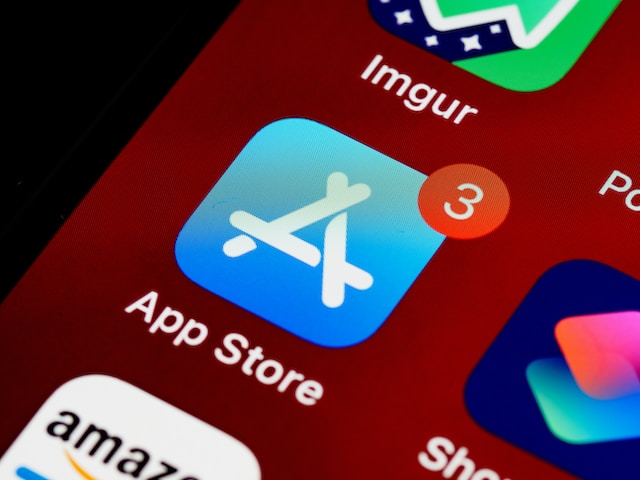Mobile apps are not a new thing. They are here for quite some time now and will stay here for the years to come. There are millions of apps vying in a similar niche and giving tough times to one another. So, identifying apps with optimal performance and better customer satisfaction is difficult yet critical.
In the fast-paced world of mobile app development, keeping track of key metrics is essential to ensure success for any mobile app. As technology advances and user expectations evolve, developers need to stay updated on the latest metrics that drive app performance and user engagement. If you don’t ensure the key parameters, you won’t be able to decide for your desirable outcomes such as “how to increase app downloads, how to improve app performance so that users get to spend more time on the app; and lastly, how to maximize app purchases.”

For that, you need to figure out ways to measure your app development KPIs. But, let’s first take a brief tour of mobile app development performance metrics.
What are Mobile App Performance Metrics?
Mobile app development metrics are the key performance indicators (KPIs) that tell you about app’s performance and keep you informed of the standard parameters. With the right information at the right time, you would be aware of the acquisition, retention, engagement, conversion and revenue generation – which are some of the worth-considering metrics of your app.
In this article, we will explore ten crucial metrics that every mobile app developer should monitor in 2023 to ensure their apps remain competitive and deliver a superior user experience.
User Acquisition:
Tracking user acquisition metrics helps developers understand how successful their marketing efforts are in attracting new users. CPA (Cost Per Acquisition) calculates the average cost of acquiring one paying customer. Metrics such as the number of app downloads, cost per acquisition (CPA), and the conversion rate from website visits to app downloads provide valuable insights into the effectiveness of user acquisition strategies.
How to calculate CPA?
CPA = Total Marketing Costs / No. of New Users Acquired
Retention Rate:
Retention rate is also one of the determining factors that gauges your app’s success and growth. The percentage of users that stick around and do not leave the app over time is measured by retention rate. A high retention rate suggests that the software is valuable to users and engaging. Monitoring this metric enables developers to identify the stickiness of their app and the effectiveness of their user retention strategies. By analyzing retention rate, developers can focus on improving features, addressing pain points, and enhancing the user experience.
How do we calculate Retention Rate?
Retention rate = Number of monthly active users / number of monthly installs
Churn Rate:
The percentage of users that cease using the app or unsubscribe from in-app purchases within a specified time frame is known as the churn rate, which is the reverse of the retention rate. Keeping an eye on churn rate helps developers identify the reasons users are abandoning their app and take corrective actions. By reducing churn rate, developers can increase user engagement and improve long-term app success.
How to calculate Churn Rate?
Churn rate = 1- Retention rate
Daily Active Users (DAU) and Monthly Active Users (MAU):
DAU and MAU metrics provide vital insights into the app’s user engagement and popularity. MAU is the total number of active, and unique users in a month, whereas DAU counts the number of unique users that use the app daily. By monitoring these metrics, developers can gauge user engagement trends, identify periods of growth or decline, and adjust their strategies accordingly. In the long run, the DAU / MAU ratio will help you figure out future growth potential and ways to go about it.
How to calculate DAU and MAU?
You must figure out how many users your app attracts daily or weekly. Your DAU/MAU will be this number.
Session Length:
As much as the acquisition rate is important, session length is also worth tracking. The reason being the need to know how many users find value in your in-app content. Session length measures the total time when a user opens / signs in the application to the time when that user logs out or stops using the app. Monitoring session length helps developers understand user behavior, the effectiveness of app features, provide inside recommendations based on user preferences and the overall user experience. Longer session lengths generally show higher user engagement and satisfaction.
How to calculate Average Session Length?
ASL = (total session duration of the user) / (number of launches during session)
Conversion Rate / Goal Completion:
The conversion rate or goal completion is a critical post-install metric. It gauges the percentage of visitors who carry out a certain activity, such as completing a purchase, joining a service, or subscribing to a newsletter. Tracking conversion rate is crucial for understanding the effectiveness of the app’s user flow, interface design, and call-to-action elements. It is an all-in-one app development metric that not only evaluates user journey, but also wants to know what value users are getting in real-time. If the conversion rate improves, this leads to an increase in revenue and app success.
How to calculate Average Session Length?
Conversion rate formula is a simple one:
Conversion rate = number of users who performed an action/number of users who could have done the action
App Load Time:
In today’s fast-paced world, users expect apps to load quickly. App load time is a critical metric that affects user satisfaction. If your app loads quickly, the users are likely to spend more time within your app. Monitoring load time helps developers identify performance bottlenecks and optimize the app’s speed, leading to improved user experience and reduced abandonment rates.
Crash Rate:
App crashes can significantly impact user experience and lead to negative reviews and uninstallations. Monitoring crash rate allows developers to identify and fix bugs, stability issues, and compatibility problems across different devices and operating systems. Reducing the crash rate enhances app reliability and user satisfaction.
How to calculate Crash Rate?
Crash rate = No. of times a user launches the app / No. of crashes occurring within the same time
Average Revenue per User (ARPU):
A financial statistic called ARPU determines the typical revenue produced by each user. Tracking ARPU helps developers measure the app’s monetization effectiveness and make informed decisions about pricing models, in-app purchases, advertisements, or subscriptions. Maximizing ARPU contributes to app profitability and sustainability.
How to calculate ARPU?
ARPU = Lifetime revenue / No. of lifetime users
App Store Ratings and Reviews:
So far, we have talked about some of the important metrics that help you channelize your marketing efforts. But, the App ratings & reviews is “your true north star metric”!
Reviews and ratings in the app store provide you an overview of how consumers feel about your app. This is useful user input that enables developers to evaluate user happiness and pinpoint areas for development. Monitoring these metrics helps developers understand user sentiment, and enhance the app quality.
To Sum It All Up:
In 2023, mobile app developers must stay proactive in monitoring key metrics to maximize app success. By tracking user acquisition, retention, engagement, revenue, and user feedback, developers can make data-driven decisions, optimize app performance, and deliver an exceptional user experience. The ten metrics discussed in this article serve as a starting point for developers to monitor and improve their mobile apps in an ever-evolving industry.







